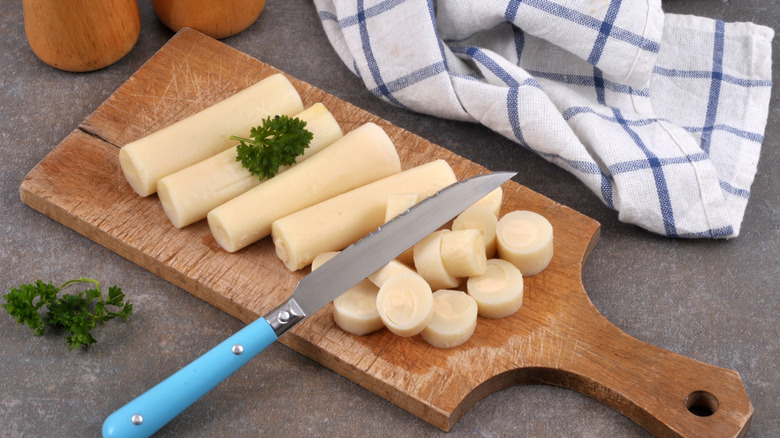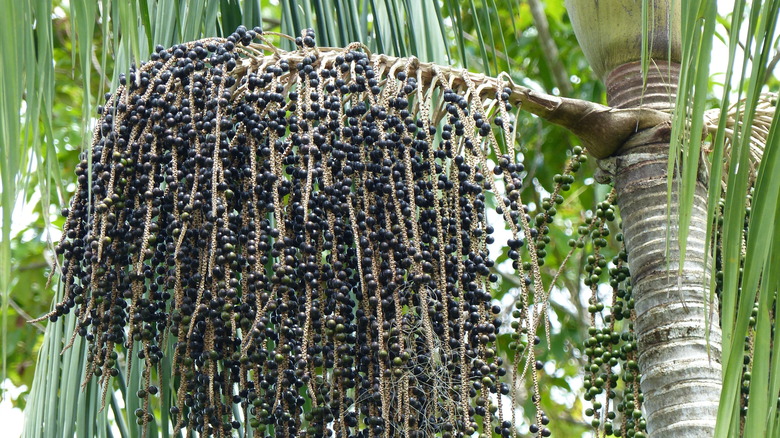Why The Heart Of Palm Vegetable Is Controversial
Heart of palm is a controversial vegetable. This ingredient goes by many nicknames and aliases, including "swamp cabbage" or "palm cabbage" to "ubod," "palmito," and "chonta." Its flavor has been compared to that of white asparagus or artichoke hearts. It was once mostly used in salads, but is now being prepared in dips, stews, and soups. It's even the key ingredient for a specific type of gluten-free pasta. Heart of palm could well be one of the hottest vegetables you've never heard of, but even as its popularity takes off, environmentalists are warning that the rising appetite for this delicacy could be one reason some palm species now face extinction.
This exotic vegetable is literally, as its name suggests, the centermost stalk from the heart of the palm tree. The vegetable is tender and pale, and to get to it, farmers need to cut down a tree, peel off its bark, and get past layers to get to the good bits underneath. The world may have approximately 2,600 different species of palm, but not all are able to produce edible hearts of palm. Today, the delicacy is harvested from the coconut, peach palm, açai palm, sabal palm, and palmetto trees.
The global appetite for hearts of palm has hurt the environment
While hearts of palm have been consumed in South and Central America since the days of the Mayans, overharvesting has driven some species like the juçara palm to near extinction. This is because when the heart of palm is harvested from trees with just a single stalk, the entire plant dies. And while there was a time farmers might only harvest hearts of palm from mature plants, an explosion in demand meant they were going after younger plants too, which affected the ability of these palm species' ability to mature, replicate, and survive.
Overharvesting is just one problem triggered by our appetite for hearts of palm. Farmers and illegal loggers looking to cash in the global appetite for this vegetable have also been known to clear sections of rainforest in order to grow this valuable crop, causing deforestation in the process.
Hearts of palm growers have tried to practice sustainable farming by harvesting only from trees like the peach palm and the açai palms because they have multiple stems, which helps them bounce back as often as every two to three years. Buying sustainably in this instance, will mean scanning the packaging of the hearts of palm products you buy, to ensure manufacturers are transparent about what region the product came from.

